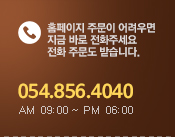What Is Titration ADHD Adults? History Of Titration ADHD Adults
페이지 정보
2 2024.05.09 03:08
짧은주소
- Short URL : //wangma.co.kr/board/bbs/?t=p7O 주소복사
본문
ADHD Titration
Titration is the process used to alter dosages until you find the one that works best for you. The aim is to get the medication to reduce ADHD symptoms while minimizing side negative effects.
It's not uncommon for people with ADHD to use a variety of types of medicine before finding the one that works for them. The titration process can take weeks or even months.
Titration Schedule
Titration is a procedure which determines the dose of medication that can be used to reduce ADHD symptoms while causing the most minimal amount of adverse effects. Doctors can find the ideal balance through trial and error. This involves starting at a low dose and gradually increasing the dosage and cautiously, and then talking to your doctor about how you're feeling.
The process of titration can take a few weeks. It's not because doctors are trying to be cruel, or pressure you to pick the right medication. They're just taking the time to watch your response to different dosages and find the optimal dosage. It's not uncommon for the initial medication to not work and requires a titration or changed altogether.
During the titration, your doctor will ask you questions about your height, weight and symptoms, your routine, and any other factors which may affect the way you react to ADHD medication. They'll want to know about any allergies, especially if you're taking any other medications or supplements, and your family history of mental health issues.
If you're taking a medication such as paroxetine, or fluoxetine that blocks CYP 2D6 enzyme, and you suffer from depression or anxiety that is comorbid, it is important to talk with your doctor about what Is titration adhd interactions these medications might have with your treatment steps for titration ADD/ADHD. Your doctor can then employ tools such as SwitchRx to help you cross-titrate your psychiatric medication, so that you get the maximum from each medication you're taking.
Rating scales are an important tool in titration. Your doctor and you can determine if you're experiencing side effects by using the rating scale. The ratings can be recorded on every week and shared with your doctor prescribing the medication. ADDitude recommends the Weiss Functional Impairment Rating Scale for this purpose.
It's important to keep in mind that certain side effects improve with time So don't change your dose too rapidly. It is best to wait a couple of weeks before making any changes. This will let you know whether the headache is due to the new dose or a bad day.
Dosage increases
The process of titration continues to determine the best dosage of medication to achieve the most effective reduction of ADHD symptoms with the least negative side effects. It can take some time for a doctor to discover the right balance. But it's important to remember that every patient is unique. Each person has different biochemistry and no two drugs have the same effect on all patients.
During titration doctors may begin the patient on a low dosage and increase it by small increments every week. They will check on the patient to see if their symptoms have improved, and if there are any adverse effects. If the side effects become severe, the doctor could reduce the dosage.
Adults suffering from ADHD are treated first by stimulant medication. Nonstimulant medications are sometimes prescribed for those who cannot tolerate stimulants, or those who do not experience adequate relief from symptoms. The dosage of these medications is often a bit ambiguous because it isn't based on the height or weight. Instead, the dosage is based on previous use of medications, genetic or metabolic differences, and comorbid conditions or treatments.
Titration isn't only for long-acting medications and non-stimulants, but also for other drugs and antidepressant medications or blood pressure. Titration is also recommended for those who are planning to undergo surgery or are taking certain medications like Clonazepam.
If the medication isn't working after several weeks of titration, it's crucial to talk with your doctor to discuss alternative options. Do not stop or reduce the dosage of medication without consulting your physician. It is important to keep in mind that ADHD symptoms can get worse as you age. There are also other factors that could affect the effectiveness of your medication, including problems with sleep, food issues or comorbid disorders.
Patients must fill out the Follow Up Vanderbilt form at every dose during the titration phase in order to note any side effects and the effectiveness. They should also schedule monthly appointments with their doctors during the titration stage and then weekly appointments once they are at an effective dose. It is essential to keep these appointments throughout the treatment to keep track of the effects of side effects, residual ADHD and comorbidities or interactions with medications.
Dosage Reduces
The goal of titration is finding the most effective dose of ADHD medication. This ideal dose may take several weeks to find. Once the right dose is discovered, patients should experience good symptom control and no side effects.
Stimulant medication can increase heart rate and blood pressure, which may be a concern for people suffering from certain medical ailments or who already suffer from high blood pressure. Titration is crucial to avoid overdoses or negative health effects.
During the process of titration healthcare professionals monitor symptoms and side effects closely. They begin with a small dose to determine how the medication affects the individual, then gradually increase the dosage. In this time it is vital that the healthcare professional pays attention to the feedback of the ADHD patient. This will help the healthcare professional to make any needed adjustments quickly.
If the dose is excessive, it may cause adverse effects such as anxiety or insomnia. In the other case, if the dose is not adequate it won't be effective at controlling symptoms. The titration method allows the healthcare professional to determine the most appropriate dosage for each patient, which increases the therapeutic benefits and minimizes adverse effects.
It is crucial for those with ADHD to continue to visit their doctor regularly. This is particularly true for those who take medication as part their treatment strategy. Regular check-ins with their doctor and open communication can help patients manage side effects and reduce the impact tolerance.
When choosing a medication it is crucial that the doctor considers various aspects, including the symptoms of ADHD and the patient's routine and lifestyle. It can be challenging to determine the appropriate medication for ADHD patients.
Non-stimulant medication can be an alternative for children suffering from ADHD. This is especially true if they also have anxiety or depression. These drugs can be administered by orally or as patches. Examples include atomoxetine, and tricyclic antidepressants. These drugs don't work as fast as stimulants, but they are just as effective and are often less disruptive to a child's sleep routine.
Side Effects
Certain medications used to treat ADHD could cause adverse effects. The titration procedure allows doctors to maximize the therapeutic benefits of the medication while minimizing side effects. This method of individualization can enhance treatment outcomes.
During the titration process it is important for patients to record their symptoms and side effects in a journal or app. The notes must be kept up-to-date to aid the doctor in determining whether the dosage that is currently in place is effective or needs to increase. Additionally to that, the doctor can utilize this information to determine how the patient has responded to the medication over time.
During this time, it's essential to see the doctor on a regular basis and check in weekly. This is especially crucial when the medication being titrated one that is stimulant-based, as it can take two to six weeks to reach full effectiveness. During these visits, the doctor will assess the overall health of the patient, as well as symptoms and adverse effects. During the titration phase, the doctor will also be monitoring the patient's heart rate and blood pressure.
After the initial titration phase, the doctor what is titration adhd will continue to monitor the medication every month. During these appointments, the doctor will review the effectiveness of the medication, as well as the patient's symptoms and side effects. The doctor can then make adjustments to the dosage, if needed.
For example, if the time for titration has not produced a dose that is appropriate, the doctor may reduce the dosage until it becomes effective. If the patient develops tolerance the medication, the doctor may modify the dosage, or switch to a different medication.
The titration process for ADHD can be a challenge but it is essential to find the optimal dosage of medication. By following a titration service program, patients can reduce ADHD symptoms and side-effects while maintaining a healthy life way of life. But titration is not enough for ADHD management. It is important to integrate a comprehensive treatment program with psychosocial interventions.
Titration is the process used to alter dosages until you find the one that works best for you. The aim is to get the medication to reduce ADHD symptoms while minimizing side negative effects.
It's not uncommon for people with ADHD to use a variety of types of medicine before finding the one that works for them. The titration process can take weeks or even months.
Titration Schedule
Titration is a procedure which determines the dose of medication that can be used to reduce ADHD symptoms while causing the most minimal amount of adverse effects. Doctors can find the ideal balance through trial and error. This involves starting at a low dose and gradually increasing the dosage and cautiously, and then talking to your doctor about how you're feeling.
The process of titration can take a few weeks. It's not because doctors are trying to be cruel, or pressure you to pick the right medication. They're just taking the time to watch your response to different dosages and find the optimal dosage. It's not uncommon for the initial medication to not work and requires a titration or changed altogether.
During the titration, your doctor will ask you questions about your height, weight and symptoms, your routine, and any other factors which may affect the way you react to ADHD medication. They'll want to know about any allergies, especially if you're taking any other medications or supplements, and your family history of mental health issues.
If you're taking a medication such as paroxetine, or fluoxetine that blocks CYP 2D6 enzyme, and you suffer from depression or anxiety that is comorbid, it is important to talk with your doctor about what Is titration adhd interactions these medications might have with your treatment steps for titration ADD/ADHD. Your doctor can then employ tools such as SwitchRx to help you cross-titrate your psychiatric medication, so that you get the maximum from each medication you're taking.
Rating scales are an important tool in titration. Your doctor and you can determine if you're experiencing side effects by using the rating scale. The ratings can be recorded on every week and shared with your doctor prescribing the medication. ADDitude recommends the Weiss Functional Impairment Rating Scale for this purpose.
It's important to keep in mind that certain side effects improve with time So don't change your dose too rapidly. It is best to wait a couple of weeks before making any changes. This will let you know whether the headache is due to the new dose or a bad day.
Dosage increases
The process of titration continues to determine the best dosage of medication to achieve the most effective reduction of ADHD symptoms with the least negative side effects. It can take some time for a doctor to discover the right balance. But it's important to remember that every patient is unique. Each person has different biochemistry and no two drugs have the same effect on all patients.
During titration doctors may begin the patient on a low dosage and increase it by small increments every week. They will check on the patient to see if their symptoms have improved, and if there are any adverse effects. If the side effects become severe, the doctor could reduce the dosage.
Adults suffering from ADHD are treated first by stimulant medication. Nonstimulant medications are sometimes prescribed for those who cannot tolerate stimulants, or those who do not experience adequate relief from symptoms. The dosage of these medications is often a bit ambiguous because it isn't based on the height or weight. Instead, the dosage is based on previous use of medications, genetic or metabolic differences, and comorbid conditions or treatments.
Titration isn't only for long-acting medications and non-stimulants, but also for other drugs and antidepressant medications or blood pressure. Titration is also recommended for those who are planning to undergo surgery or are taking certain medications like Clonazepam.
If the medication isn't working after several weeks of titration, it's crucial to talk with your doctor to discuss alternative options. Do not stop or reduce the dosage of medication without consulting your physician. It is important to keep in mind that ADHD symptoms can get worse as you age. There are also other factors that could affect the effectiveness of your medication, including problems with sleep, food issues or comorbid disorders.
Patients must fill out the Follow Up Vanderbilt form at every dose during the titration phase in order to note any side effects and the effectiveness. They should also schedule monthly appointments with their doctors during the titration stage and then weekly appointments once they are at an effective dose. It is essential to keep these appointments throughout the treatment to keep track of the effects of side effects, residual ADHD and comorbidities or interactions with medications.
Dosage Reduces
The goal of titration is finding the most effective dose of ADHD medication. This ideal dose may take several weeks to find. Once the right dose is discovered, patients should experience good symptom control and no side effects.
Stimulant medication can increase heart rate and blood pressure, which may be a concern for people suffering from certain medical ailments or who already suffer from high blood pressure. Titration is crucial to avoid overdoses or negative health effects.
During the process of titration healthcare professionals monitor symptoms and side effects closely. They begin with a small dose to determine how the medication affects the individual, then gradually increase the dosage. In this time it is vital that the healthcare professional pays attention to the feedback of the ADHD patient. This will help the healthcare professional to make any needed adjustments quickly.
If the dose is excessive, it may cause adverse effects such as anxiety or insomnia. In the other case, if the dose is not adequate it won't be effective at controlling symptoms. The titration method allows the healthcare professional to determine the most appropriate dosage for each patient, which increases the therapeutic benefits and minimizes adverse effects.
It is crucial for those with ADHD to continue to visit their doctor regularly. This is particularly true for those who take medication as part their treatment strategy. Regular check-ins with their doctor and open communication can help patients manage side effects and reduce the impact tolerance.
When choosing a medication it is crucial that the doctor considers various aspects, including the symptoms of ADHD and the patient's routine and lifestyle. It can be challenging to determine the appropriate medication for ADHD patients.
Non-stimulant medication can be an alternative for children suffering from ADHD. This is especially true if they also have anxiety or depression. These drugs can be administered by orally or as patches. Examples include atomoxetine, and tricyclic antidepressants. These drugs don't work as fast as stimulants, but they are just as effective and are often less disruptive to a child's sleep routine.
Side Effects
Certain medications used to treat ADHD could cause adverse effects. The titration procedure allows doctors to maximize the therapeutic benefits of the medication while minimizing side effects. This method of individualization can enhance treatment outcomes.
During the titration process it is important for patients to record their symptoms and side effects in a journal or app. The notes must be kept up-to-date to aid the doctor in determining whether the dosage that is currently in place is effective or needs to increase. Additionally to that, the doctor can utilize this information to determine how the patient has responded to the medication over time.
During this time, it's essential to see the doctor on a regular basis and check in weekly. This is especially crucial when the medication being titrated one that is stimulant-based, as it can take two to six weeks to reach full effectiveness. During these visits, the doctor will assess the overall health of the patient, as well as symptoms and adverse effects. During the titration phase, the doctor will also be monitoring the patient's heart rate and blood pressure.
After the initial titration phase, the doctor what is titration adhd will continue to monitor the medication every month. During these appointments, the doctor will review the effectiveness of the medication, as well as the patient's symptoms and side effects. The doctor can then make adjustments to the dosage, if needed.
For example, if the time for titration has not produced a dose that is appropriate, the doctor may reduce the dosage until it becomes effective. If the patient develops tolerance the medication, the doctor may modify the dosage, or switch to a different medication.
The titration process for ADHD can be a challenge but it is essential to find the optimal dosage of medication. By following a titration service program, patients can reduce ADHD symptoms and side-effects while maintaining a healthy life way of life. But titration is not enough for ADHD management. It is important to integrate a comprehensive treatment program with psychosocial interventions.













등록된 댓글이 없습니다.